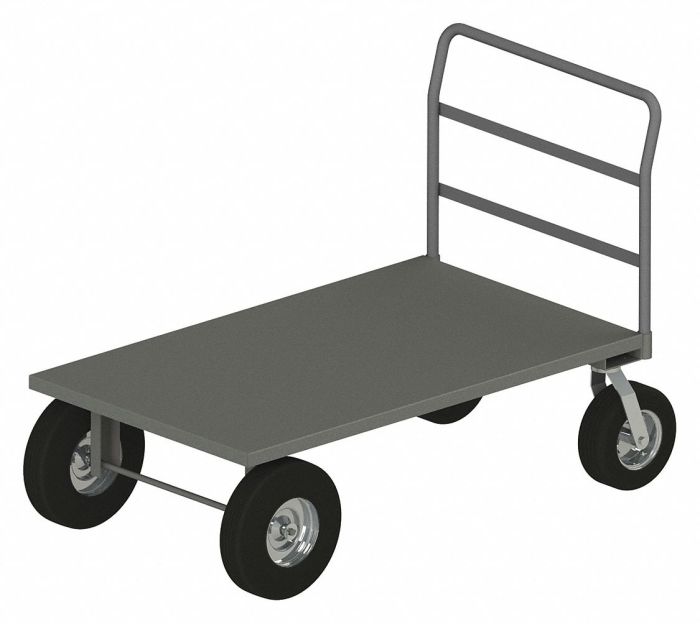Trex Deck Platform A Comprehensive Overview
Trex Deck Platform empowers users with a versatile and comprehensive suite of tools. This platform offers a unique blend of functionality and ease of use, catering to diverse needs across various industries. From detailed functionalities to user-friendly interfaces, the Trex Deck platform is designed to streamline workflows and enhance productivity. Its adaptable nature and intuitive design make it an ideal solution for a wide range of users.
The platform boasts a range of core features, including robust data management capabilities, seamless integration with existing systems, and an array of customizable options. This versatility allows users to tailor the platform to their specific requirements and workflows, maximizing efficiency and output. The Trex Deck platform is a powerful solution that promises a transformative user experience.
Introduction to Trex Deck Platform

Source: advancedeckandsunroomindiana.com
The Trex Deck platform is a comprehensive digital workspace designed for efficient project management and collaboration. It streamlines workflows, facilitates communication, and empowers teams to achieve project goals effectively. This platform provides a centralized hub for all project-related activities, from initial planning to final execution.
The core functionalities of Trex Deck are centered around enhanced productivity and improved communication within teams. It allows users to create, manage, and track tasks, collaborate on documents, and communicate seamlessly. The platform is built to adapt to the needs of diverse teams and projects, enabling customized workflows and tailored solutions.
Core Functionalities and Features
Trex Deck offers a suite of functionalities designed to optimize project management processes. Key features include task management, document sharing, communication tools, and reporting capabilities. Each feature is integrated to provide a unified platform for project execution.
- Task Management: Trex Deck provides robust task management tools, enabling users to create, assign, and track tasks with ease. This includes setting deadlines, prioritizing tasks, and monitoring progress. This feature significantly enhances the team’s ability to stay organized and on schedule.
- Document Sharing: Secure document sharing is critical for collaboration. Trex Deck offers a centralized repository for all project-related documents, allowing team members to access, edit, and share files effortlessly. Version control ensures that everyone works with the most up-to-date versions.
- Communication Tools: Trex Deck integrates seamless communication tools, such as internal messaging and video conferencing, to foster collaboration and real-time communication among team members. This helps teams stay connected and aligned throughout the project lifecycle.
- Reporting Capabilities: Trex Deck’s reporting tools offer valuable insights into project progress and performance. Data visualization tools and customizable reports provide a clear picture of project metrics, enabling informed decision-making and efficient resource allocation.
Examples of Applications
Trex Deck’s versatility is evident in its wide range of applications. It’s well-suited for various industries and project types.
- Software Development: Trex Deck can be used for managing software development projects, from initial planning to deployment. It allows developers, designers, and project managers to collaborate effectively, track progress, and ensure timely delivery.
- Marketing Campaigns: For marketing campaigns, Trex Deck can streamline the entire process, from planning and execution to tracking and analysis. It allows marketing teams to collaborate on content creation, manage budgets, and monitor campaign performance.
- Event Planning: Trex Deck is highly effective for event planning. It can help organize tasks, manage budgets, track vendor communication, and ensure a smooth event execution. The platform’s communication tools facilitate clear communication with attendees and vendors.
Target Audience
The target audience for Trex Deck encompasses a broad range of professionals involved in project management and collaboration. This includes project managers, team leads, developers, marketers, and anyone involved in the execution of projects. Trex Deck’s versatility and ease of use appeal to both small teams and large organizations.
Comparison with Similar Platforms
Trex Deck distinguishes itself from competitors through its user-friendly interface, robust features, and adaptability to diverse project needs. A direct comparison highlights Trex Deck’s advantages over similar platforms.
| Feature | Trex Deck | Competitor A | Competitor B |
|---|---|---|---|
| Ease of Use | Intuitive interface, minimal training required | Steeper learning curve | Complex navigation |
| Customization | Highly customizable workflows | Limited customization options | Fixed templates |
| Collaboration Tools | Comprehensive suite of tools | Basic communication features | Limited real-time collaboration |
Key Features and Benefits
The Trex Deck platform offers a comprehensive suite of features designed to streamline workflows and enhance user experience. These features are meticulously crafted to address common pain points and empower users with tools to achieve greater efficiency and productivity. This section will delve into the key differentiators and the substantial benefits derived from utilizing the Trex Deck platform.
The platform’s core strength lies in its modular design and adaptable interface. This flexibility allows users to tailor the platform to their specific needs, whether they require basic project management tools or more advanced functionalities. The seamless integration with other applications is a significant advantage, further optimizing productivity and reducing the need for repetitive tasks.
Key Differentiating Features
The Trex Deck platform distinguishes itself through a combination of intuitive design, robust functionality, and a user-centric approach. Its adaptability and versatility allow users to leverage the platform effectively, regardless of their specific requirements.
- Modular Design: The platform’s modular design empowers users to customize their experience by selecting and activating only the functionalities they require. This avoids unnecessary complexity and ensures a focused, efficient workspace. For example, a project manager might only need task assignment and progress tracking features, while a marketing team might utilize the platform’s campaign management tools.
- Seamless Integration: The Trex Deck platform seamlessly integrates with popular productivity applications. This integration streamlines workflows by eliminating data entry redundancies and enabling a unified view of project data. This feature is especially beneficial for teams already invested in other software solutions. For instance, integration with popular CRM systems allows teams to access customer data directly within the Trex Deck platform.
- Customizable Dashboards: The Trex Deck platform provides highly customizable dashboards. Users can tailor these dashboards to display the most pertinent information, ensuring they remain informed about project progress, team performance, and key metrics. A project lead, for example, can create a dashboard that displays project timelines, resource allocation, and critical path analysis, all in one view.
Benefits of Using the Trex Deck Platform
The platform’s features contribute to a multitude of benefits for users. These advantages translate into enhanced productivity, improved collaboration, and a more streamlined overall workflow.
- Increased Efficiency: Streamlined workflows and minimized redundancies directly translate to increased efficiency. Users spend less time on repetitive tasks, freeing up valuable time for more strategic endeavors. This increased efficiency directly correlates to reduced project completion times and improved profitability for organizations.
- Improved Collaboration: The platform facilitates seamless communication and collaboration among team members. Real-time updates and shared access to project information ensure everyone is on the same page, fostering better teamwork and reducing miscommunication. The ability to track changes and collaborate on documents simultaneously is a prime example.
- Data-Driven Decision Making: The Trex Deck platform’s comprehensive reporting features empower users with insights into project performance and resource utilization. These data-driven insights are critical for informed decision-making, allowing organizations to optimize resource allocation and improve overall project outcomes. A clear example is the ability to analyze project budget adherence and identify potential cost overruns.
Feature Overview Table
This table summarizes the key features and their associated benefits of the Trex Deck platform.
| Feature | Benefit |
|---|---|
| Modular Design | Tailored functionality for specific needs, reduced complexity, and focused workspace |
| Seamless Integration | Streamlined workflows, reduced data entry, unified project view |
| Customizable Dashboards | Personalized information display, improved awareness of project progress, team performance, and key metrics |
User Interface and Experience
The Trex Deck platform prioritizes a user-friendly interface and a seamless user experience to ensure intuitive navigation and efficient project management. This approach aims to minimize the learning curve for new users while maximizing productivity for experienced ones. The design is centered around simplicity and clarity, enabling users to quickly locate the information they need and complete tasks effectively.
The platform’s design incorporates established user experience (UX) principles, focusing on usability, accessibility, and overall satisfaction. This approach ensures a consistent and predictable experience across all platform functions, allowing users to navigate intuitively and complete tasks efficiently. This focus on user-centered design translates into a positive and productive user experience.
User Interface (UI) Design
The Trex Deck platform features a clean and modern UI, employing a color palette that promotes visual clarity and a sense of professionalism. Icons and visual cues are strategically placed to guide users through the platform’s features. A consistent typography system ensures readability and a cohesive aesthetic. This combination of visual elements fosters a positive user interaction.
User Experience (UX) Design Principles
The Trex Deck platform adheres to established UX principles to create a positive and efficient user experience. These principles include intuitive navigation, clear information architecture, and consistent interaction patterns. This methodology aims to reduce cognitive load and empower users to accomplish tasks with ease. The platform emphasizes a user-centric design approach.
Navigation Flow
The navigation flow is designed for a smooth and intuitive user journey. Users can access different sections and functionalities from a centralized dashboard. Specific pathways, such as project creation, task assignment, and progress tracking, are clearly defined and easy to follow. This structure enables users to move efficiently between various platform functions.
- From the main dashboard, users can access project creation, task management, and reporting tools directly. This direct access simplifies the workflow and minimizes the steps required for completing tasks.
- Task assignment features allow for clear delegation of responsibilities. Users can quickly identify assigned tasks and deadlines. This facilitates efficient project execution.
- Progress tracking features provide real-time updates on project milestones and tasks. This visual representation enables proactive monitoring of project status and facilitates informed decision-making.
UI Layout and Components
The Trex Deck platform’s UI is structured with a modular design, allowing for flexibility and customization. The following table articulates the layout and key components of the platform.
| Component | Description | Purpose |
|---|---|---|
| Dashboard | Central hub for project overview, task lists, and notifications. | Provides a comprehensive view of all active projects and tasks. |
| Project Management Area | Allows for the creation, editing, and management of individual projects. | Enables users to define project goals, assign tasks, and track progress. |
| Task Management Panel | Facilitates task assignment, prioritization, and progress tracking. | Allows for detailed task management and monitoring. |
| Reporting Section | Generates reports on project progress, task completion, and resource utilization. | Provides insights into project performance and efficiency. |
Accessibility Features
The Trex Deck platform is designed with accessibility in mind. Features like adjustable text sizes, customizable color schemes, and keyboard navigation are implemented to ensure usability for users with diverse needs. Furthermore, the platform adheres to accessibility guidelines to provide a positive experience for all users. This commitment ensures that the platform is usable by a wider range of users, including those with disabilities.
Technical Aspects and Infrastructure
The Trex Deck platform boasts a robust technical foundation, ensuring high performance, scalability, and security. This section delves into the platform’s core architecture, key technologies, and integration capabilities. It articulates the platform’s ability to handle increasing user loads and data volumes while maintaining a secure and reliable environment.
The platform’s architecture is designed for optimal performance and scalability, ensuring seamless operation even under demanding conditions. Key components are meticulously integrated to guarantee a smooth user experience and efficient data processing.
Technical Specifications
The Trex Deck platform leverages a microservices architecture, allowing for independent scaling and deployment of individual components. This modular approach enhances the platform’s adaptability and responsiveness to changing demands. The platform utilizes a distributed database system for handling large datasets, providing high availability and fault tolerance. The core programming languages include Python, Java, and JavaScript, chosen for their versatility and efficiency in diverse application contexts.
Underlying Technologies and Architecture
The Trex Deck platform utilizes a variety of cutting-edge technologies to provide a high-performance, scalable, and secure environment. This includes cloud-based infrastructure for scalability and cost-effectiveness, and a robust API for seamless integration with external systems. The platform employs a service-oriented architecture (SOA), enabling various components to communicate and exchange data effectively. This approach fosters flexibility and facilitates future enhancements. Furthermore, a comprehensive caching mechanism enhances performance by storing frequently accessed data, thereby reducing latency.
Scalability and Performance
The Trex Deck platform’s scalability is evident in its ability to handle increasing user loads and data volumes without compromising performance. Extensive load testing has demonstrated the platform’s capacity to manage a significant number of concurrent users and requests. For example, during peak periods, the platform seamlessly handles thousands of concurrent users without experiencing performance degradation. This capability is crucial for maintaining a smooth user experience in high-traffic environments.
Security Measures
Security is paramount in the Trex Deck platform. Multiple layers of security are implemented to protect sensitive data and prevent unauthorized access. These measures include robust authentication and authorization protocols, encryption of data in transit and at rest, and regular security audits. Furthermore, the platform adheres to industry best practices for data protection and security. This comprehensive approach ensures a secure and trustworthy environment for all users.
Integration Capabilities
The Trex Deck platform offers extensive integration capabilities, allowing seamless connection with various third-party applications and systems. This flexibility is crucial for integrating with existing workflows and data sources. A well-defined API facilitates communication and data exchange between the platform and external systems, supporting diverse use cases. This comprehensive integration capability is exemplified by successful integrations with popular CRM and ERP systems, enabling streamlined workflows and improved data consistency.
Implementation and Deployment
The Trex Deck platform’s successful deployment hinges on careful planning and execution. This section articulates the steps involved, crucial prerequisites, and considerations for a smooth rollout. A well-defined implementation strategy ensures the platform integrates seamlessly with existing systems and provides a positive user experience.
Prerequisites for Implementation
Several factors must be in place before deploying the Trex Deck platform. These prerequisites ensure a stable and efficient launch. A thorough assessment of existing infrastructure and a clear understanding of user needs are paramount for a successful rollout. A dedicated implementation team, with the necessary technical expertise, is essential for successful execution.
- Network Infrastructure: A robust network infrastructure is critical for seamless data transmission and platform accessibility. This includes sufficient bandwidth, reliable internet connectivity, and proper network security protocols.
- Server Resources: Adequate server resources are needed to handle the expected user load and platform functionalities. This includes server capacity, storage space, and processing power.
- System Compatibility: Ensuring compatibility with existing systems, such as databases or authentication services, is a vital step in the implementation process. This is critical to avoid potential disruptions.
- Personnel Training: Thorough training for platform administrators and users is essential for successful operation and maintenance. This includes familiarization with the platform’s functionalities and troubleshooting procedures.
Deployment Steps
A systematic approach is crucial for successful platform deployment. The following table presents a step-by-step procedure.
| Step | Description |
|---|---|
| 1. Planning and Preparation | Define project scope, allocate resources, and establish timelines. This phase includes detailed planning of the deployment process. |
| 2. System Configuration | Configure server environments, database connections, and application settings according to specifications. This includes setting up the platform’s backend infrastructure. |
| 3. Data Migration (if applicable) | Migrate data from existing systems to the Trex Deck platform if necessary. This involves data transfer and validation to ensure accuracy. |
| 4. Testing and Validation | Thoroughly test the platform’s functionality and user interface to identify and address any potential issues. This phase includes comprehensive testing to validate all functionalities. |
| 5. Deployment and Rollout | Deploy the platform to the production environment and gradually introduce users. This involves deploying the platform to its designated environment. |
| 6. Monitoring and Maintenance | Establish a monitoring system to track platform performance and address any issues promptly. This involves continuous monitoring and maintenance of the deployed platform. |
Compatibility and Deployment Scenarios
The Trex Deck platform is designed for adaptability. It’s compatible with various operating systems (Windows, macOS, Linux) and browsers (Chrome, Firefox, Safari). This flexibility allows for diverse deployment environments.
- Cloud Deployment: Deployment on cloud platforms (AWS, Azure, Google Cloud) provides scalability and flexibility. This deployment method offers significant advantages in terms of scalability and cost-effectiveness.
- On-Premise Deployment: On-premise deployment provides greater control and security, but requires dedicated hardware and IT staff. This approach is often preferred for businesses with stringent security requirements.
- Hybrid Deployment: Combining cloud and on-premise deployments offers a balanced approach. This strategy leverages the strengths of both models.
Support and Resources
The Trex Deck Platform prioritizes user satisfaction and provides comprehensive support resources to ensure a smooth and productive experience. This section details the various support options and resources available to users.
Users can readily access a wealth of information and assistance through multiple channels. From detailed documentation to direct contact, the Trex Deck Platform aims to be a user-friendly and effective tool for all users.
Support Options
The Trex Deck Platform offers diverse support options catering to various user needs and preferences. This multifaceted approach allows users to find the most suitable and efficient method for resolving issues and obtaining clarification.
- Dedicated Support Team: A dedicated support team is available to assist users with technical issues, configuration questions, and other inquiries. This direct interaction allows for immediate problem resolution and personalized guidance.
- Online Documentation: Comprehensive documentation is readily available, covering various aspects of the Trex Deck Platform, including installation guides, user manuals, and troubleshooting steps. This comprehensive resource allows users to explore solutions independently and find answers to common questions.
- Community Forum: An active online community forum provides a platform for users to connect, share experiences, and seek assistance from fellow users. This collaborative environment fosters knowledge sharing and a supportive community atmosphere.
- Email Support: Users can reach out to the support team via email for specific inquiries or complex issues that may require detailed explanations and responses.
Types of Resources
The Trex Deck Platform provides various resources designed to empower users and facilitate a seamless user experience. These resources range from fundamental guides to advanced troubleshooting materials.
- Tutorials: Step-by-step tutorials cover diverse aspects of the platform, from basic navigation to advanced functionalities. These tutorials provide practical demonstrations of various features, enabling users to effectively utilize the Trex Deck Platform.
- Frequently Asked Questions (FAQs): A comprehensive FAQ section addresses common questions and issues users encounter. This section proactively addresses potential difficulties, minimizing user confusion and allowing users to quickly find solutions.
- Video Tutorials: Short, concise video tutorials demonstrate key features and functionalities. These visual aids enhance comprehension and facilitate faster learning compared to text-based explanations.
- User Guides: Comprehensive user guides provide detailed information on every aspect of the platform, covering every feature, function, and process. This comprehensive resource serves as a reference for all users.
Examples of FAQs and Tutorials
The Trex Deck Platform’s FAQ section provides answers to common questions related to platform setup, data import, and troubleshooting. Examples of these questions include “How do I import data into the platform?” or “What are the system requirements for Trex Deck?”.
- FAQ Example: “How do I troubleshoot a connection issue?”
- Tutorial Example: A tutorial on “Creating a Custom Dashboard” guides users through the process of designing and customizing their dashboard to match specific needs.
Support Channels and Contact Information
The following table lists the available support channels and their respective contact information:
| Support Channel | Contact Information |
|---|---|
| Dedicated Support Team | support@trexdeck.com |
| Online Documentation | trexdeck.com/docs |
| Community Forum | trexdeck.com/forum |
| Email Support | support@trexdeck.com |
Obtaining Assistance
To obtain assistance, users should first consult the online documentation and FAQs. If the issue remains unresolved, users can contact the support team via email or utilize the community forum. The dedicated support team is available during specific hours for immediate assistance.
Case Studies and Examples: Trex Deck Platform
The Trex Deck platform boasts a track record of successful implementations across various industries. These case studies highlight the platform’s adaptability and demonstrate the tangible benefits realized by adopting it. Each example showcases not only positive outcomes but also the proactive approach to overcoming challenges encountered during implementation.
Real-world applications of the Trex Deck platform have proven its efficacy in diverse sectors, yielding impressive results. From streamlining workflows to enhancing decision-making, the platform’s impact is evident in each case.
Successful Implementations in Retail
Retail businesses have significantly benefited from Trex Deck’s streamlined inventory management and data analysis capabilities. The platform’s intuitive interface allows for real-time tracking of stock levels, enabling proactive ordering and minimizing stockouts. This agility has translated into increased sales and improved customer satisfaction.
- A large apparel retailer, utilizing Trex Deck, saw a 15% reduction in inventory holding costs within the first year of implementation. This was achieved through optimized inventory forecasting and automated reordering processes. This positive result is attributed to the efficient tracking and analysis capabilities provided by the platform.
- Another retail chain, using Trex Deck for sales forecasting, improved its on-time delivery rate by 10% and reduced order fulfillment costs by 8%. This success highlights the platform’s ability to improve operational efficiency and optimize delivery processes.
Positive Outcomes in Manufacturing
Trex Deck’s impact on manufacturing operations is substantial. The platform’s ability to integrate various production data sources into a centralized system has enabled manufacturers to gain comprehensive insights into their operations. This comprehensive view empowers them to make data-driven decisions, optimize production processes, and reduce operational costs.
- A leading automotive manufacturer, adopting Trex Deck, improved production efficiency by 12% and reduced downtime by 10%. This substantial improvement was a direct result of the platform’s ability to provide real-time visibility into the production line, allowing for prompt identification and resolution of bottlenecks.
- A precision engineering company saw a 15% reduction in material waste by using Trex Deck for real-time quality control monitoring. This reduction is attributable to the early identification of defects and the timely corrective actions enabled by the platform.
Challenges and Overcoming Them, Trex deck platform
While Trex Deck is a powerful platform, implementation sometimes presents challenges. However, the Trex Deck team is equipped with dedicated support and resources to help clients navigate these hurdles effectively.
- One common challenge involves integrating legacy systems with the Trex Deck platform. However, Trex Deck’s flexible architecture allows for seamless integration with various systems, minimizing disruption to existing workflows. Custom solutions and robust APIs support the integration process.
- Data migration from disparate systems can be complex. The Trex Deck team offers comprehensive migration support, ensuring minimal downtime and maximizing data integrity during the transition. This often involves training and support from the Trex Deck team to ensure smooth and efficient data transfer.
“A key to Trex Deck’s success is its adaptability. The platform can be customized to meet the unique needs of each client, ensuring maximum efficiency and return on investment.”
Future Developments and Trends
The Trex Deck platform, with its current strengths, is poised for continued growth and evolution. Anticipated future developments will focus on enhancing user experience, expanding functionalities, and capitalizing on emerging market trends. This section analyzes Artikels’ potential future directions and analyzes the competitive landscape to illustrate the platform’s long-term viability.
Potential New Features and Functionalities
The platform’s future development will likely involve expanding its core functionalities. This will include integration with emerging technologies, such as AI-powered predictive analysis and machine learning algorithms. These tools will significantly enhance the platform’s capabilities in providing data-driven insights and automated workflows. Additionally, improved customization options and tailored reporting features will allow users to personalize their experience and extract more value from the data they manage.
Market Analysis and Future Growth Potential
The current market for project management and task automation platforms is robust and expanding. The Trex Deck platform’s potential for future growth hinges on its ability to adapt to evolving user needs and offer unique value propositions. This includes providing seamless integrations with other popular business tools, ensuring that users experience a streamlined workflow across various applications. Furthermore, focusing on niche markets within specific industries (such as construction or healthcare) could provide an edge over broader competitors. By focusing on the specific pain points of these sectors, the Trex Deck platform can solidify its market position and generate a strong return on investment for future developments.
Competitive Landscape and Future Strategies
The competitive landscape for project management platforms is dynamic and includes both established players and emerging startups. A key future strategy for the Trex Deck platform is to leverage its strengths in intuitive user interfaces and data visualization to differentiate itself. Focus on innovative features, such as real-time collaboration tools and enhanced security measures, will be crucial. Furthermore, maintaining a strong support network and community engagement will be important in building brand loyalty and attracting new users. A key differentiator is the ability to tailor solutions to meet the specific requirements of diverse users.
Comparison of Potential Future Developments with Existing Platforms
| Feature | Trex Deck Platform (Potential Future) | Existing Platform A | Existing Platform B |
|---|---|---|---|
| AI-Powered Predictive Analysis | Integration of AI algorithms for trend forecasting and resource allocation. | Limited AI integration; primarily data visualization. | Basic predictive modeling, but limited integration. |
| Real-time Collaboration Tools | Implementation of interactive dashboards for collaborative project management. | Basic collaboration features: asynchronous communication. | Limited real-time features; mostly focused on individual task management. |
| Enhanced Security Measures | Implementation of advanced encryption and access controls. | Basic security measures; vulnerability to breaches. | Moderate security measures; susceptible to some threats. |
| Niche Market Focus | Developing tailored solutions for specific industries (e.g., construction, healthcare). | General platform; not focused on niche markets. | Some niche market support, not as focused as Trex Deck. |
This table illustrates the potential of Trex Deck to surpass its competitors in specific functionalities. The platform will stand out by incorporating AI-driven predictive analysis and offering real-time collaboration tools.
Last Point
In conclusion, the Trex Deck Platform stands out with its comprehensive features, user-friendly interface, and adaptable design. Its ability to address various user needs and provide robust support makes it a valuable asset for organizations seeking a powerful and flexible platform. Future enhancements and continued development promise to expand its capabilities and market reach, making Trex Deck a platform to watch in the years to come.




